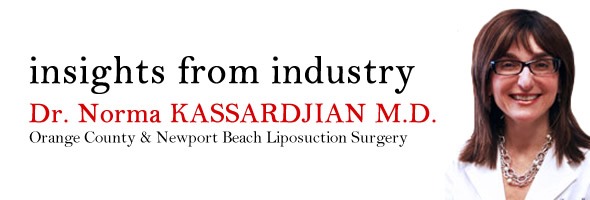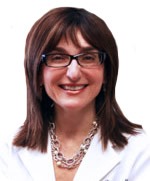
Please can you give a brief introduction to stem cells?
Stem Cells are special “master” cells in your body. Stem cells are the building blocks that can replicate into other kinds of cells like blood cells, heart, muscle, blood vessels and cartilage.
Every day, your stem cells repair tissue in your body, but as one grows older the stem cell number and potency decreases.
First isolated in bone marrow, stem cells have been used for decades to regenerate healthy blood and immune cells in cancer patients through a stem cell transplant.
There are a few different types of stem cells that have been discovered and exist in umbilical cord blood and adipose tissue [fat].
Today, doctors have successfully used a patient’s own stem cells in a new field of medicine called regenerative medicine, to grow new cartilage in their knee, regenerate heart muscle after a heart attack, and even engineer new tracheas and bladders for patients with disease or injury.
How much is being spent on stem cell research?
According to statistics put forth by the National Institute of Health, the United States is spending nearly $1 billion a year on Stem cell research, and, as so far, these expenditures have resulted in incredible findings that have begun revolutionizing the medical field.
What has stem cell research revealed?
Research using mouse models has suggested that stem cells may hold the secret to curing epilepsy, boost the immune system, and even restore memory—something that doctors have been working on for years.
On top of this, research at the Mayo Clinic has shown stem cell therapy to delay or even eliminate joint replacement procedures, a revelation discovered through the stem cells’ ability to repair damaged cartilage in the hips and knees.
With all of these promising results, it is becoming clearer and clearer that we are on our way to a medical revolution, and it is stem cell research that is leading the charge.
How has the aesthetic industry started to use stem cells?
Using stem cell research and all of the positive benefits of stem cells themselves, the aesthetic industry has also begun transforming the status quo.
Because fat is one of the largest sources of adult stem cells in the human body, we have been actively using stem cells for years as a soft, natural tissue filler in many different procedures, including breast, buttocks, and lips augmentation.
But, given how useful these stem cells can be in all medical fields, we have to wonder: is it time to persuade our patients to do more than these simple procedures?
Fortunately, because of our consistent removal of fat from our patients during liposuction, we now have the opportunity to offer our patients—and the medical field—something more than cosmetic surgery, and that something is stem cell banking.
What is stem cell banking?
Stem cell banking is the collection and frozen storage [cryobanking] of a person’s youngest, healthy stem cells for use by that person in medical treatments for disease or injury that take place in the future.
What can stem cells from adipose tissue be used for?
Stem cells that can be farmed from adipose tissue can be used in a multitude of different ways because of their pluripotent nature.
They can differentiate into blood vessels, muscle, ligament, bone, nerve, cartilage, and more, giving doctors the variety and use they need to fix almost any ailment.
Because of this, more and more people have begun seeking out stem cell banking options to preserve their health down the road, a process known as “bio-insurance”.
With the increasing possibility of regenerative medicine becoming a viable medical specialty, if stored now, these stem cells can be used in case of emergency to prevent aging, or even to preserve their health and vitality, no matter if it’s cosmetic or clinical.
What are the benefits of stem cell banking?
Stem cell banking enables people to save their unique tissue and stem cells as a type of ‘biological insurance’ in case of future need.
Imagine a future where doctors can use your own, youngest stem cells to help you live a longer, healthier life. The cells may be useful one day to treat serious health issues and problems you encounter such as heart attack, bone fractures, osteoarthritis, stroke and even cancer.
It is best to bank stem cells at the youngest age possible This is because stem cells collected at a later age [after 65] are far fewer in number and less able to regenerate and turn into other cells types.
Where does stem cell banking take place?
Also known as cryopreservation, Stem Cell banking is taking place in multiple FDA-approved labs which offer services to patients who wish to preserve and bank their adipose tissue and stem cells for future use (such as cosmetic treatments, reconstructive surgery, augmentation procedures, and use in the recently merging field of regenerative medicine).
Best of all, most companies today who offer these services make it easy to incorporate the stem cell option into their normal procedural services.
All it takes is the use of temperature-stable kits, provided by the company, and a quick overnight ship to their laboratory, all of which is backed up by a data collection form, real time tracking, and a unique ID so there are no mix ups or errors.
Once it arrives at the lab, the tissue is assessed for cell count and is processed to ensure long term usage and viability, so the patient can use it no matter when the need arises.
How expensive is stem cell banking?
Collection and banking costs $865 for initial storage and $120 per year maintenance fee. 3 and 6 month payment plans are available for convenience.
Do you think more should be done to educate people on stem cell banking?
In the end, we—in the cosmetic industry—must ask one question: should we do more to educate our patients on the benefits of stem cell banking? If all the research and data is correct, then this surgeon’s answer is an emphatic yes.
How do you think the future of stem cell banking will progress?
Stem cell banking began with expectant parents banking umbilical cord blood stem cells in the mid-1990’s. Since then, an estimated 1M people have their stem cells banked for future use.
The understanding of stem cells and their power to regenerate and heal has opened a new door to medicine, and treatments that have never been thought possible.
The most profound uses on the horizon are restoring heart function for patients suffering a heart attack, nerve regeneration in patients that have had a stroke, ‘engineering’ or growing new organs and structures for patients with disease or injury.
Adipose tissue [fat] is the most concentrated source of stem cells in the body. Adipose tissue contains mesenchymal [ma-zink-a-mal] stem cells and their potential in medicine is driving more than 100 FDA clinical trials currently treating thousands of patients.
The new option for adults to bank their stem cells for future use is now being offered so anyone can save their own biological resource in the quest to live a longer healthier life.
Where can readers find more information?
More information can be found at http://www.liposuction.com/adicyte-stem-cells.html and www.adicyte.com.
About Dr. Norma Kassardjian, M.D.
 Although she performs a mix of medical and cosmetic dermatology, Dr. Norma’s expertise lies in Mohs Micrographic Surgery which is a precise technique for the removal of skin cancers followed by the cosmetic repair of the surgical world.
Although she performs a mix of medical and cosmetic dermatology, Dr. Norma’s expertise lies in Mohs Micrographic Surgery which is a precise technique for the removal of skin cancers followed by the cosmetic repair of the surgical world.
She also specializes in Tumescent Liposuction and has performed more than 3,000 surgeries to date.
Being a woman, she understands the challenges that women face as they enter pre-menopausal stages where their faces and bodies change with time and hormonal fluctuations. In this regard, she prefers using non-invasive techniques such as the IPL (Intense Pulse Light) and Fractional Lasers as well as Restylane and Juvederm to minimize the appearance of fine lines and restore volume that is lost with age.
She certainly has the experience and an eye for beauty is necessary to achieve natural and age-appropriate results for facial rejuvenation and body sculpting.